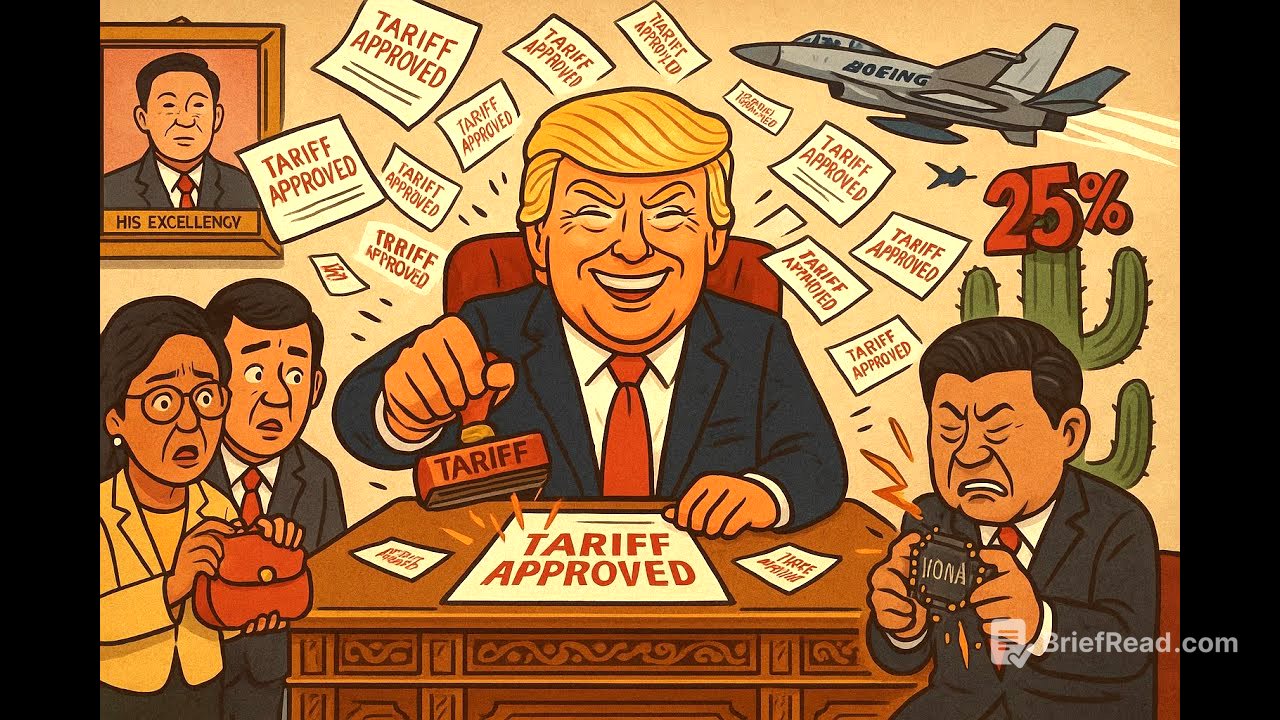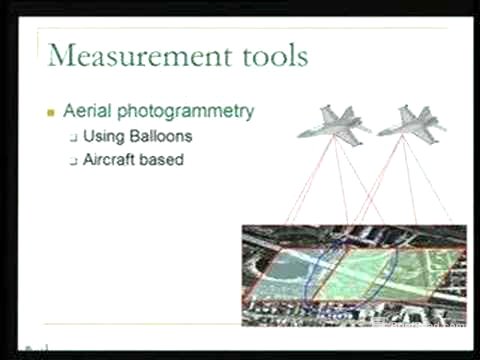TLDR;
The video discusses a hypothetical scenario where Donald Trump, as President in 2025, imposes tariffs on various countries around the world. The reactions and negotiations that follow highlight the complexities and potential consequences of such a trade policy.
- Trump imposes tariffs on 14 countries, leading to varied reactions.
- Some countries negotiate deals, while others retaliate or adapt.
- The video satirizes the impact of these tariffs on global trade and diplomacy.
Intro: Trump's Tariff Doctrine [0:00]
In 2025, President Donald J. Trump sends letters to 14 countries, imposing tariffs ranging from 10% to 40%. This action sparks a global reaction of horror and panic, except in Myanmar, where it's met with joy. The "Trump tariff doctrine" is simple: if you export, you get taxed, unless Trump likes you or your tweets.
Deals and Discounts in Asia [0:55]
Vietnam negotiates a deal, reducing the tariff from 46% to 20% by agreeing to stop fake "Made in Vietnam" labels on Chinese goods and opening its market to US products. The Philippines gets a 19% tariff and responds by offering zero tariffs on US imports. Singapore acknowledges the shock to the global trading system, setting up a task force and buying US LNG to avoid supply chain disruptions. Indonesia negotiates a cut to 19% by dropping tariffs on 99% of US goods, excluding bacon due to religious reasons. Malaysia, taking a more patient approach, receives a 25% tariff, slightly higher due to their hesitation.
Myanmar's Unusual Approval [3:33]
Myanmar receives the highest tariff at 40%, but its leader, Min Aung Hlaing, is pleased simply to receive official correspondence from Washington, comparing his situation to Trump's election defeat and praising Trump for actions like shutting down Voice of America.
East Asia's Trade Tussles [4:52]
Japan has its auto tariffs cut to 15% in exchange for pledging $550 billion in US investments, including purchasing Boeing jets. South Korea faces a 25% tariff and attempts to negotiate, but a meeting is canceled due to a scheduling conflict with China, causing panic and stock drops. Taiwan is threatened with a 32% tariff but its semiconductor industry remains untouched due to its global importance.
China's Retaliation and Negotiation [6:57]
China is hit with tariffs up to 145% and retaliates with 100% tariffs on US goods and blocking rare earth exports. After negotiations, rare earth exports resume, tariffs dip, and Nvidia's H20 chips are approved for export to China.
Russia, Canada, and Mexico's Predicaments [7:51]
Trump threatens Russia with tariffs of 100% to 500% on those buying Russian oil, though Russia is already selling discounted oil to other countries. Canada faces threats after proposing a digital tax on US tech giants, leading to a quick retreat. Mexico is hit with 25% tariffs on key exports, leading to ongoing talks amid disagreements over issues like fentanyl.
Europe's Tariff Troubles [9:51]
The EU is given a deadline to sign a deal or face tariffs, leading to internal debates and a compromise of a 15% tariff deal. The UK agrees to open up to US beef and other products in exchange for reduced auto tariffs and dropped duties on steel and aluminum.
Global Trade War Aftermath [11:44]
Brazil and Argentina face tariffs despite diplomatic efforts. Switzerland declares "harder" neutrality in response to tariffs on luxury watches. India anticipates tariffs and raises its own in response. Trump's actions rewrite the global trade playbook, turning tariffs into a diplomatic tool.








